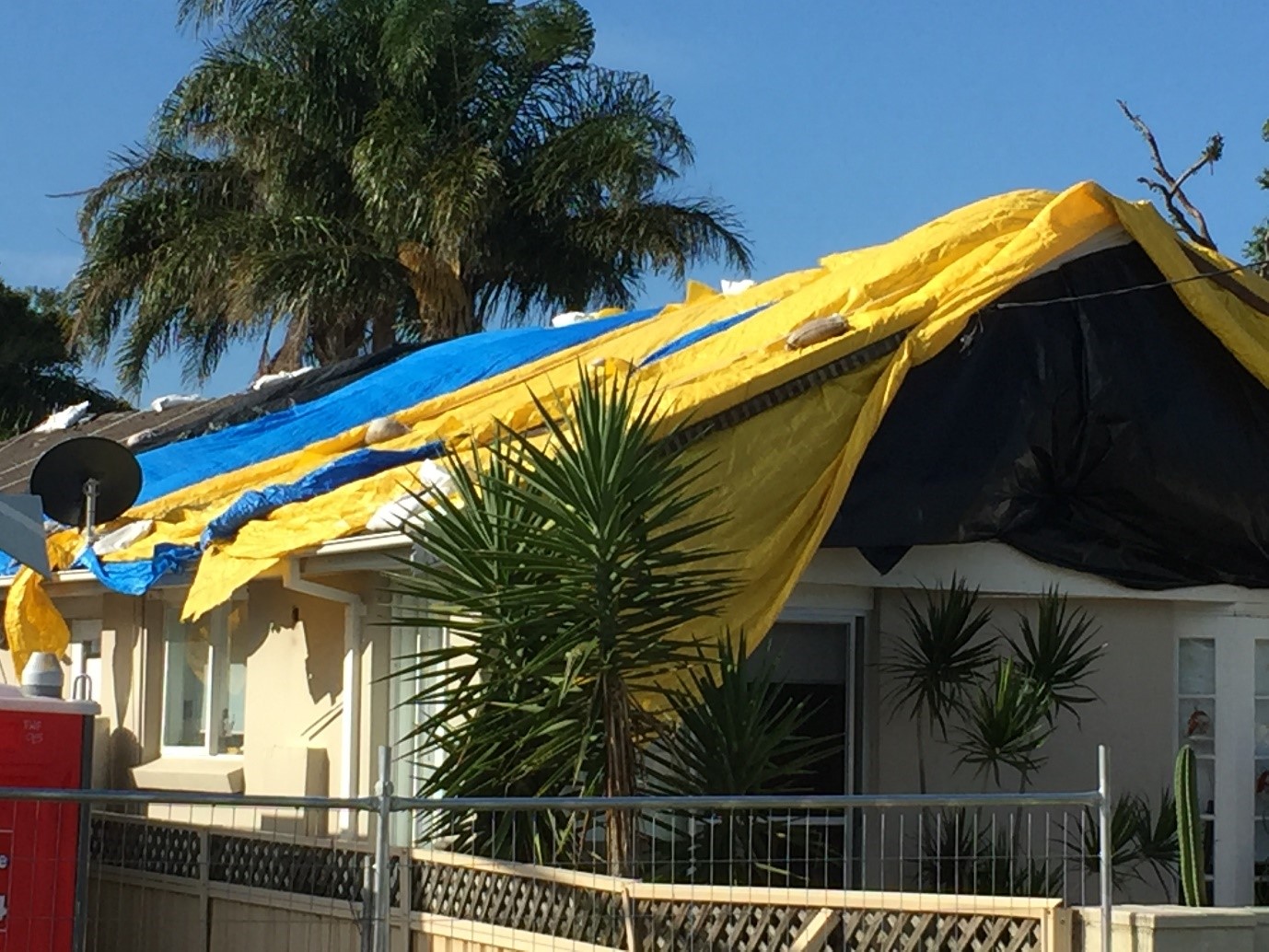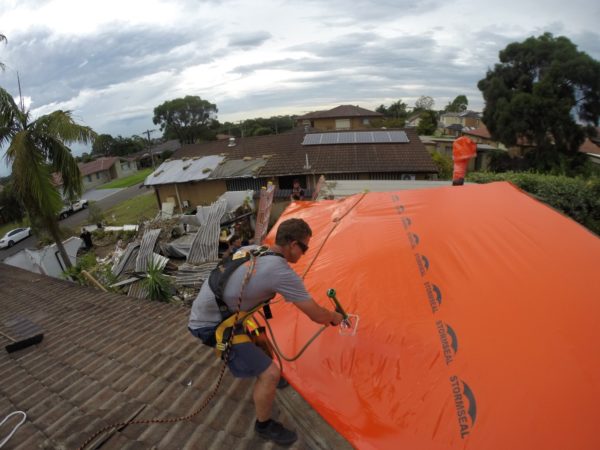The Blue Tarp is History

By Stormseal.
The "Blue Tarp" Tarpaulin Age began when some bright spark realized that fabric + oil/wax = temporary waterproofing.
The word tarpaulin was first used by 17th century sailors to refer to a tar-coated palling (a canvas cloth) that covered cargo at sea. In the 20th century, polyurethane replaced tar, then canvas was superseded by woven plastic.
Over time, we found many uses for tarps, including: clothing, signage, livestock shelters, greenhouses, fume and dust containment, pool lining, sports-field protection, and camping for recreation or refuge. Our belief in the powers of tarpaulin grew until we lost touch with reality: during the Cold War, soldiers were issued with a small tarp that was supposed to protect them from radioactive fallout.
Roofers know the reality of tarps. We know that, with ropes and sandbags, we can cover a damaged roof with a tarp. We also know that, despite our best efforts, the tarp will soon start to flap, and slip, and tear, and leak, and blow off. We know that we’ll probably have to come back and re-attach/replace the tarp again… and again… and again… while the increasingly unhappy householder waits for their insurance payout and permanent repairs, and damage to the property mounts. Insurance claims can escalate ten-fold, thanks to the ‘protection’ of a tarpaulin.
It’s time to consign tarps to history and move on to a 21st century solution: StormsealTM. It’s a strong, patented polyethylene film that heat-shrinks to cover a damaged structure and – unlike tarps – stays put until permanent repairs are made. Stormseal has easily passed hail impact tests and 150mph/240kph wind tunnel tests, and can resist all weather for one year, if necessary.
Stormseal is also faster, cheaper and easier to install than old-fashioned tarpaulins. The low-density film is cut and fitted at the worksite. Invented in Australia, Stormseal has been installed on thousands of damaged roofs Downunder, reducing roofers’ costs and bringing peace of mind to storm victims and their insurers.
Stormseal manufacturing and distribution capabilities are now established in the U.S. and dozens of companies are lining up to have their staff trained as Stormseal installers. Ideal for rapid response and cost-effective resilience in the face of natural disaster, the arrival of Stormseal heralds a brighter future for roofers and their clients in the USA.
The Tarpaulin Age has ended. Catch up at www.stormseal.com.





















Comments
Leave a Reply
Have an account? Login to leave a comment!
Sign In